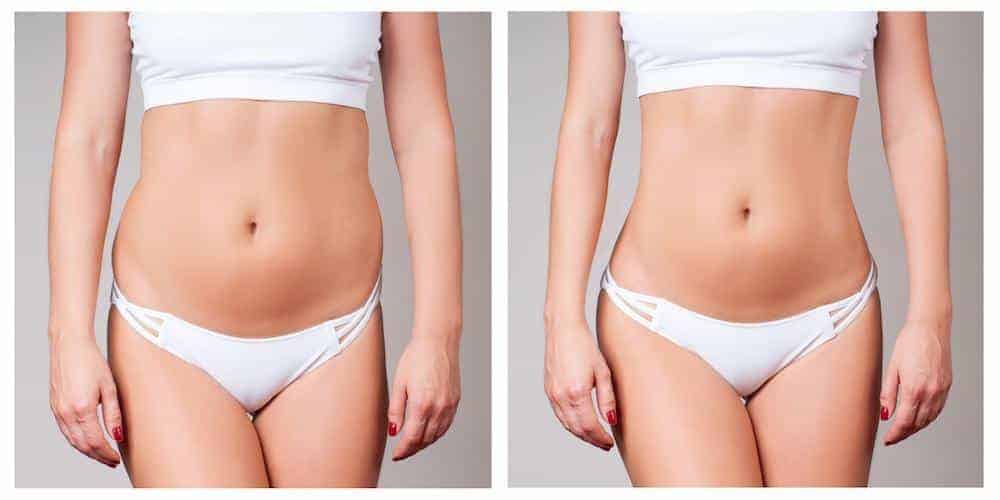Power-Assisted Liposuction vs. Traditional Liposuction: Key Differences and Benefits
Understanding Liposuction
Surgical Technique
Liposuction is a surgical technique. It aims for body contouring and fat reduction. Surgeons use it to remove stubborn fat deposits from specific areas.
Liposuction Procedure
The liposuction procedure involves small incisions. A cannula, a thin tube, is inserted through these cuts. The cannula breaks up the fat cells. Then, a vacuum or syringe removes the fat.
Power Liposuction Cannulas
Power-assisted liposuction uses special cannulas. These cannulas vibrate rapidly. The vibrations help break up fat more easily. This method can be less tiring for surgeons.
Traditional Liposuction
Traditional liposuction relies on manual movement of the cannula. Surgeons use back-and-forth motions to loosen fat cells. This process can be more labor-intensive.
VASER Lipo Procedure
VASER lipo is another advanced technique. It uses ultrasound waves to liquefy fat cells. This makes them easier to remove. VASER lipo can target fat more precisely.
Goals of Liposuction
The primary goal of liposuction is not weight loss. Instead, it aims to enhance body shape. It targets areas where diet and exercise have little effect.
Targeted Body Areas
Common areas for liposuction include:
- Abdomen
- Thighs
- Buttocks
- Arms
- Neck
These are places where stubborn fat often accumulates.
Not a Weight Loss Solution
Liposuction should not be seen as a weight loss solution. It works best for people who are close to their ideal weight. It is meant to improve body contours.
Popular Among Women
Many women opt for liposuction. They seek to refine their body shape. However, men also undergo this procedure for similar reasons.
Key Differences Explained
Cannula Manipulation
Traditional liposuction uses a manual cannula. Surgeons move it back and forth to break up fat. This process can be tiring and time-consuming.
Power-assisted liposuction (PAL) uses a motorized cannula. The device vibrates, making it easier to break up fat. This reduces the effort needed by the surgeon.
Procedure Invasiveness
The vibrating cannula in PAL offers a less invasive procedure. The vibrations help loosen fat cells more efficiently. This means potentially less pain for patients. Recovery times may also be shorter.
Anesthesia Requirements
Traditional liposuction often requires general anesthesia. This is because the procedure is more invasive. Patients might need to stay in a hospital longer after surgery.
PAL typically requires local anesthesia. The less invasive nature of this technique allows for this. Patients can often go home the same day.
Target Areas
Both methods can target various body areas. Common areas include the abdomen, thighs, and arms. Men often opt for chest and back treatments.
Benefits of Power-Assisted Liposuction
Reduced Recovery Time
Patients experience reduced recovery time with power-assisted liposuction. The method uses a vibrating cannula, which breaks down fat more efficiently. This results in less trauma to the surrounding tissues. Patients can often return to their daily activities sooner compared to traditional liposuction.
Precision Targeting
Power-assisted liposuction offers greater precision in targeting difficult fat deposits. The vibration allows for better control and accuracy. Surgeons can sculpt the body more effectively. This leads to better overall results and a more defined appearance.
Local Anesthesia
The procedure can be performed under local anesthesia due to its less invasive nature. This reduces the risks associated with general anesthesia. Patients remain awake but comfortable during the surgery. It also allows for quicker post-operative recovery.
Less Fatigue for Surgeons
Surgeons experience less fatigue during power-assisted liposuction procedures. The vibrating cannula does much of the work, reducing manual effort. This can lead to shorter operation times and improved outcomes.
Lower Complication Rates
Power-assisted liposuction has lower complication rates compared to traditional methods. The technique causes less damage to blood vessels and nerves. Patients experience fewer side effects such as bruising and swelling.
Enhanced Fat Removal
This method enhances fat removal efficiency. The vibration helps dislodge fat cells more easily. Surgeons can remove larger volumes of fat in a shorter time frame. This makes power-assisted liposuction ideal for treating multiple areas in one session.
Improved Skin Retraction
Patients often see improved skin retraction after power-assisted liposuction. The technique stimulates collagen production, which helps tighten the skin. This results in smoother, firmer skin post-procedure.
Exploring Traditional Liposuction
Manual Techniques
Traditional liposuction involves manually breaking up fat. Surgeons use a cannula to loosen fat cells. This process requires physical effort from the surgeon. Traditional liposuction cannulas are inserted through small incisions. The procedure can be physically demanding.
Anesthesia Requirement
General anesthesia is often necessary for traditional liposuction. This is especially true for larger areas like the abdomen or thighs. Local anesthesia might be used for smaller regions. The need for general anesthesia adds complexity and risk to the procedure.
Effectiveness
Despite being more invasive, traditional liposuction is effective. It removes stubborn fat cells that resist diet and exercise. This technique can achieve significant results in body contouring. Patients often see a noticeable difference after recovery.
Different Approaches
There are variations of traditional liposuction techniques. Tumescent liposuction involves injecting a solution into the fat tissue before removal. This helps reduce bleeding and pain. Mechanical liposuction uses vibrations to assist in breaking up fat cells.
Recovery Time
Recovery from traditional liposuction can take several weeks. Patients may experience bruising, swelling, and discomfort. Compression garments are often recommended to aid healing and reduce swelling.
Risks and Complications
Traditional liposuction carries some risks. These include infection, scarring, and uneven fat removal. There is also a risk of fluid accumulation under the skin, known as seroma.
Recovery and Results Comparison
Recovery Period
Power-assisted liposuction (PAL) offers a shorter recovery period. Most patients experience a recovery time of 1-2 days. This is significantly less than the 4-5 days typically required for traditional liposuction. The reduced recovery time allows patients to return to normal activities sooner.
Traditional liposuction often involves more extensive tissue manipulation. This leads to longer healing times. Patients may need additional rest and care during recovery.
Pain and Downtime
Post-operative pain can vary between the two techniques. PAL generally results in less pain due to its gentler approach. The device used in PAL assists in breaking down fat, reducing manual effort by the surgeon. This minimizes trauma to surrounding tissues.
Traditional liposuction can cause more discomfort. The manual technique requires more force, which can lead to increased bruising and swelling. Consequently, patients might experience greater pain and longer downtime.
Precision in Results
Both techniques are effective in removing fat. However, PAL provides a precision advantage. The power-assisted device allows for more controlled movements, enabling surgeons to target specific areas accurately.
Traditional liposuction also removes fat effectively but lacks the same level of precision. Surgeons rely on manual skill, which can sometimes result in uneven fat removal.
Final Outcomes
The final outcomes of both techniques are similar in terms of fat reduction. Patients can expect significant improvements in body contouring from either method.
PAL often produces smoother results due to its precise nature. This can be particularly beneficial for areas requiring detailed contouring.
Emotional Impact
Recovery experiences can affect emotional well-being. Shorter recovery times and less pain with PAL can reduce stress and anxiety for patients. They may feel more satisfied with their decision and the overall process.
Longer recovery periods and more pain from traditional liposuction might lead to increased frustration or dissatisfaction. It’s important for patients to consider these factors when choosing a procedure.
Choosing the Right Procedure
Individual Needs
Choosing between power-assisted liposuction (PAL) and traditional liposuction depends on individual needs. Each person has unique body contours and goals. Some may prefer a less invasive procedure with quicker recovery. Others might focus on precision to achieve specific results.
Consultation with Surgeon
Consulting with a qualified surgeon is crucial. A professional like Dr. Nukta can evaluate your body and recommend the best technique. During the consultation, discuss your expectations and medical history. The surgeon will explain the differences between the techniques.
Recovery Time
Recovery time varies between procedures. Traditional liposuction often requires more downtime due to greater trauma to tissues. Power-assisted liposuction uses a vibrating cannula, causing less tissue damage and potentially shorter recovery. Consider how much time you can dedicate to healing.

Precision Needs
Precision is another important factor. Power-assisted liposuction offers better control and accuracy. This technique is ideal for targeting small or delicate areas. Traditional liposuction can also be precise but may involve more manual effort from the surgeon.
Anesthesia Preferences
Anesthesia preferences should influence your decision. Traditional liposuction usually requires general anesthesia, which comes with higher risks and longer recovery. Power-assisted liposuction can often be done under local anesthesia, reducing risks and allowing for a faster return to daily activities.
Emotional Considerations
Emotional factors are also important in this decision. Feeling confident and comfortable with the chosen procedure impacts overall satisfaction. Discuss any concerns or anxieties with your surgeon to ensure peace of mind.
Advances in Liposuction Technology
Power-Assisted Liposuction
Power-assisted liposuction (PAL) is an innovative liposuction technique. It uses a vibrating cannula to break up fat cells. This makes the removal process easier and more efficient.
Traditional liposuction requires more manual effort from the surgeon. PAL reduces this effort, leading to less fatigue for the surgeon. It also allows for more precise fat removal.
Less Invasive Procedures
Technological advancements have made liposuction less invasive. Modern techniques such as PAL minimize tissue damage. This results in less bruising and swelling.
Patients experience shorter recovery times compared to traditional methods. Smaller incisions are used, reducing the risk of infection. These improvements make the procedure safer and more comfortable.
Precision and Control
PAL offers greater precision than traditional liposuction. The vibrating cannula targets fat cells more accurately. Surgeons can sculpt the body with better control.
This technology also allows for smoother results. Patients report higher satisfaction with their outcomes. The precision of PAL helps achieve natural-looking contours.
Ongoing Research and Development
Research continues to enhance liposuction technologies. Scientists are working on ways to further reduce recovery times. New devices and techniques are being tested.
Improving patient outcomes is a primary goal. Innovations aim to make procedures even safer and more effective. Enhanced lipoaspirate methods are being explored to refine fat extraction.
Patient Benefits
Advanced liposuction modalities offer several benefits:
- Reduced pain and discomfort
- Shorter recovery periods
- Improved aesthetic results
- Lower risk of complications
These advantages make modern liposuction appealing to many patients. The focus on safety and effectiveness drives ongoing technological progress.
Selecting Your Surgeon
Experience Matters
Choosing a surgeon with experience in both traditional and power-assisted liposuction is crucial. Experienced surgeons understand the nuances of each method. They can recommend the best approach for your body type and goals.
Look for a surgeon who has performed many procedures. This ensures they are skilled and knowledgeable. Experience reduces risks and improves results.
Comprehensive Consultations
A good surgeon will offer comprehensive consultations. During these meetings, you can discuss your goals and concerns. The surgeon should explain the differences between traditional and power-assisted liposuction.
Ask questions about the procedure, recovery time, and expected results. Detailed consultations help you make informed decisions.
Check Credentials
Verify the surgeon’s credentials before making a decision. Ensure they are board-certified in plastic surgery. Board certification means they have met specific standards of education, training, and ethics.
You can check their credentials on medical board websites. Certified surgeons are more likely to provide safe and effective treatments.
Patient Reviews
Reading patient reviews can give you insight into a surgeon’s reputation. Look for reviews on independent medical sites. Positive reviews from previous patients suggest good outcomes and satisfaction.
Pay attention to comments about the surgeon’s bedside manner, communication skills, and professionalism. Patient feedback is valuable when assessing potential surgeons.
Before-and-After Photos
Reviewing before-and-after photos of previous liposuctions is essential. These photos show the surgeon’s skill and the quality of their work. Look for consistency in results across different patients.
Examine photos of patients with similar body types to yours. This will give you a realistic idea of what to expect. High-quality before-and-after photos indicate a skilled surgeon.
Closing Thoughts
Choosing between power-assisted liposuction and traditional liposuction can be tough. Both have their perks, but it all boils down to your specific needs and goals. Power-assisted liposuction offers precision and quicker recovery, while traditional methods remain reliable. Your choice should align with your body type and desired outcomes.
Don’t forget, picking the right surgeon is crucial. Their expertise can make a huge difference in your results. Do your homework, ask questions, and trust your gut. Ready to take the next step? Consult with a qualified professional to explore your options and make an informed decision that suits you best. Your journey to a better you starts now!
Frequently Asked Questions
What is the main difference between power-assisted liposuction and traditional liposuction?
Power-assisted liposuction uses a vibrating cannula to break up fat, making it easier to remove. Traditional liposuction relies on manual effort to extract fat.
Which procedure has a shorter recovery time?
Power-assisted liposuction generally has a shorter recovery time due to less tissue trauma. Patients often experience quicker healing and less bruising compared to traditional liposuction.
Are the results of power-assisted liposuction better than traditional liposuction?
Yes, power-assisted liposuction can provide more precise contouring and smoother results. The advanced technology allows for more effective fat removal.
Is power-assisted liposuction safer than traditional liposuction?
Both procedures are safe when performed by an experienced surgeon. However, power-assisted liposuction may reduce the risk of complications due to its less invasive nature.
Can I choose which type of liposuction I want?
Yes, after consulting with your surgeon, you can decide which procedure suits your needs and goals best. Your surgeon will guide you based on your body type and desired outcomes.
How do I know if my surgeon is qualified for these procedures?
Ensure your surgeon is board-certified and has extensive experience in both types of liposuction. Check reviews and ask for before-and-after photos of previous patients.
Does insurance cover power-assisted or traditional liposuction?
Typically, cosmetic procedures like liposuction are not covered by insurance. Always check with your provider to understand what is included in your policy.





